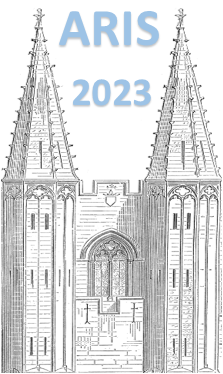Orateur
Description
In-beam gamma-ray spectroscopy experiments have been actively performed at Radioactive Isotope Beam Factory (RIBF) of the RIKEN Nishina Center owing to the high secondary beam intensities from the BigRIPS fragment separator [1]. These experiments mostly employed the DALI2 NaI array with the very high $\gamma$-ray detection efficiency [2], and the Zero Degree Spectrometer [1] and the SAMURAI spectrometer [3] for reaction product identifications. Among the abundant scientific achievements from in-beam $\gamma$-ray spectroscopy experiments, the first spectroscopy of $^{54}$Ca [4], $^{78}$Ni [5], and $^{70}$Kr [6] are examples of the capability of the RIBF facility.
Despite the notable accomplishments, experiments have been mostly limited to even-even nuclei in the vicinity of shell closures due to the moderate energy resolution of the DALI2 array. For the new capability in spectroscopy, a germanium-based high-resolution $\gamma$-ray detector array was constructed in 2019 under the High-resolution Cluster Array at RIBF (HiCARI) project [7]. The HiCARI array was comprised of several different types of high-purity germanium detectors, six segmented triple clusters from the Miniball collaboration, four segmented Clover detectors from the IMP, a quad-type tracking detector from the RCNP, and a triple-cluster tracking detector P3 from the LBNL. Through the improved position and energy resolution, the spectroscopy capabilities could be extended to further regions of interest such as odd-mass and deformed nuclei. Moreover, the HiCARI array was capable to measure level lifetimes based on the line-shape method [8].
In 2020 and 2021, 8 experiments were successfully carried out during 31.5 day of beam times with $^{238}$U and $^{70}$Zn primary beams. The campaign included a wide range of exotic neutron-rich nuclei covering various physics motivations, such as shell and shape evolutions. An overview of the HiCARI project and first preliminary results from the rich physics program will be presented.
[1] T. Kubo et al., Prog. Theor. Exp. Phys. 2012, 03C003 (2012).
[2] S. Takeuchi et al., Nucl. Instrum. And Methods Phys. Res. A 763, 596 (2014).
[3] T. Kobayashi et al., Nucl. Instrum. And Methods Phys. Res. B 317, 294 (2013).
[4] D. Steppenbeck et al., Nature 502, 207 (2013).
[5] R. Taniuchi et al., Nature 569, 52 (2019).
[6] K. Wimmer et al., Phys. Lett. B 785, 441 (2018).
[7] K. Wimmer et al., RIKEN Accel. Prog. Rep. 54, S27 (2021).
[8] P. Doornenbal et al., Nucl. Instrum. Methods Phys. Res. A 613, 218 (2010).

